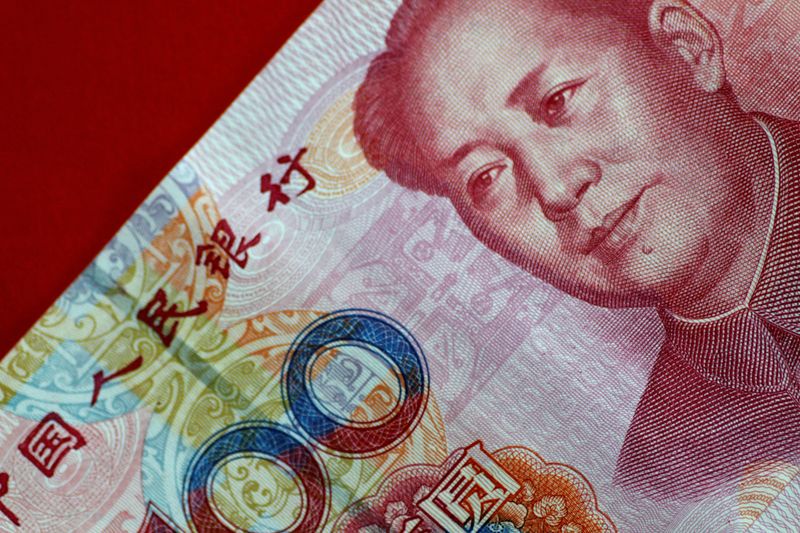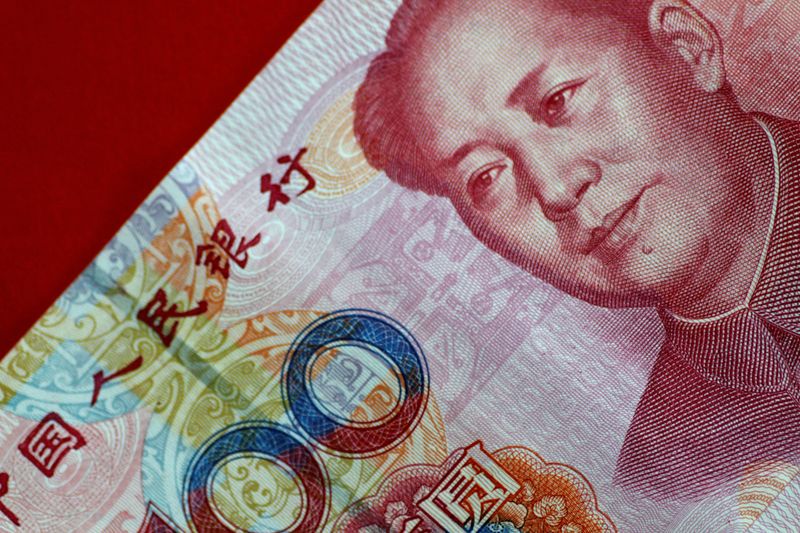
By Jamie McGeever
(Reuters) – A look at the day ahead in Asian markets.
Stocks in Asia are poised to rise on Thursday after investors took the latest U.S. inflation data as a final seal on an interest rate cut from the Federal Reserve next week, sparking a widespread rally on Wednesday across almost every asset class.
Bonds were the obvious exception – yields spiked higher in the wake of a 10-year Treasury debt auction – and emerging market currencies are also likely to feel the squeeze from a muscle-flexing dollar.
China’s yuan fixing and trading will be closely watched following an exclusive Reuters report that Beijing may allow the currency to weaken as they brace for higher trade tariffs in a second Donald Trump presidency in the United States.
The contemplated move reflects China’s recognition that it needs bigger economic stimulus to combat Trump’s threat of bigger tariffs.
But the People’s Bank of China said later on Wednesday that the foundation for a “basically stable” yuan exchange rate remains “solid”, the FX market is operating steadily, and the yuan is likely to stabilize and strengthen towards the end of this year.
That may be, but weakening the currency is an obvious counter measure to tariffs from Washington. Despite Beijing’s insistence to the contrary, few analysts would bet against it.
There are two main complicating factors for China, however. The yuan will likely weaken against non-dollar currencies, especially in Asia where countries such as Vietnam have grown as hubs for finishing Chinese manufactured goods and avoiding U.S. sanctions. This risks a backlash from trading partners in Asia, perhaps via tit-for-tat regional currency devaluations.
Secondly, a weaker yuan could accelerate capital flows out of China from domestic and international investors alike. Cumulative outflows this year have been large, although they have notably improved since Beijing first unveiled its new fiscal and liquidity stimulus a few months ago.
According to the Institute of International Finance, China posted net FDI outflows this year for the first time in decades, and is poised to post “substantial” portfolio outflows next year of around $25 billion.
On the other hand, the IIF estimates that net portfolio flows into India will more than triple next year to $22 billion. Overall capital inflows to emerging markets are set to slow 24% to $716 billion, the IIF estimates.
While the spike in Treasury yields and the dollar on Wednesday may dampen the mood in Asia on Thursday, investors will surely take heart from the surge in world stocks – Wall Street and the MSCI World equity index posted their biggest increases in over a month.
Thursday’s calendar in Asia sees the release of Australian unemployment, Hong Kong industrial production and producer price inflation, and the latest industrial production and inflation figures from India.
Here are key developments that could provide more direction to markets on Thursday:
– India inflation (November)
– Australia unemployment (November)
– ECB policy meeting

